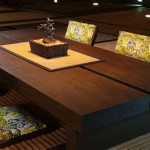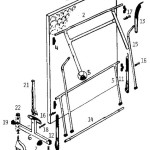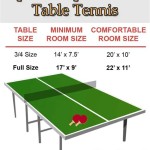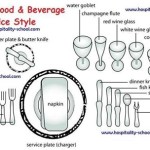Retro Chrome Kitchen Table And Chairs: A Nostalgic Revival
The retro chrome kitchen table and chairs represent a distinct design era, typically associated with the mid-20th century, particularly the 1950s and 1960s. These pieces often feature a combination of chrome-plated metal and vibrant, durable materials like Formica or vinyl. Their resurgence in popularity stems from a desire for nostalgia, a fascination with mid-century modern design, and a recognition of their inherent durability and functionality. This article will explore the key characteristics, historical context, design considerations, and maintenance aspects of retro chrome kitchen table and chairs.
Historical Context and Design Influences
The rise of chrome furniture in the mid-20th century was closely linked to advancements in manufacturing techniques and the availability of new materials. Chrome plating, a process of electrodepositing a thin layer of chromium onto a metal substrate, provided a durable, rust-resistant, and visually appealing finish. Formica, a type of laminate, offered a wipe-clean surface that was resistant to heat, stains, and scratches. These materials were ideal for kitchen furniture, which needed to withstand the rigors of daily use.
The design influences of the period were diverse. Streamlining, borrowed from the automotive and aviation industries, emphasized smooth curves and aerodynamic forms. The influence of the Bauhaus school, with its emphasis on functionality and clean lines, was also evident. Furthermore, the post-war economic boom led to a sense of optimism and a desire for modern, stylish homes. This cultural context fostered the widespread adoption of chrome kitchen furniture, which represented progress, modernity, and a break from the more traditional styles of the past.
Common design features included rounded table edges, often in a contrasting color to the tabletop, such as red, black, or turquoise. Chair designs often featured padded vinyl seats and backs, frequently with simple, geometric patterns or solid colors. Tubular chrome legs were a hallmark, providing both structural support and a distinctive aesthetic. The color palettes used were often bold and cheerful, reflecting the optimistic spirit of the era. The availability of mass production helped to make these designs affordable and accessible to a wide range of consumers.
Key Characteristics and Identifying Features
Identifying a true retro chrome kitchen table and chairs set requires attention to several key characteristics. The presence of chrome plating is paramount. Authentic pieces will have a noticeable shine, although some may show signs of wear and oxidation depending on their age and previous care. The quality of the chrome plating can vary, with some manufacturers using thicker, more durable coatings than others.
The materials used for the tabletop and chair upholstery are also important indicators. Formica was a popular choice for tabletops due to its durability and ease of cleaning. Vinyl was commonly used for chair seats and backs, offering a comfortable and relatively durable surface. The presence of these materials, along with their associated textures and patterns, can help to authenticate a retro piece.
Construction methods also provide clues. Retro chrome furniture was typically mass-produced, but the quality of construction can still vary. Look for sturdy welds and joints, as well as well-made upholstery. The presence of identifying marks or labels from the manufacturer can further assist in authentication. Brands such as Cosco, Howell, and Samsonite were known for producing chrome kitchen furniture during this period. However, it’s important to note that reproductions and replicas are also available, so careful examination is necessary to distinguish between original pieces and modern imitations.
Furthermore, the overall design aesthetic should align with the mid-century modern style. Look for clean lines, rounded edges, and a focus on functionality. The color palette should also be consistent with the period, typically featuring bold, saturated colors like red, turquoise, yellow, and black. Subtle details, such as the shape of the chair backs and the design of the table legs, can also help to identify a true retro piece.
Design Considerations and Integration into Modern Spaces
Incorporating retro chrome kitchen table and chairs into a modern home requires careful consideration of the surrounding décor and overall design aesthetic. While these pieces can serve as a focal point, it's important to ensure that they complement, rather than clash with, the existing style of the kitchen or dining area.
One approach is to embrace the retro aesthetic fully, creating a space that evokes the atmosphere of a mid-century diner or kitchen. This can involve using retro-inspired wallpaper, colorful accents, and vintage kitchenware. Alternatively, retro chrome furniture can be incorporated into a more contemporary setting, providing a touch of vintage charm and a unique contrast to modern elements. This approach might involve pairing the chrome table and chairs with sleek, minimalist cabinets and modern appliances.
The size and scale of the furniture should also be considered. Retro chrome kitchen tables were typically smaller than modern dining tables, so it's important to ensure that the table is appropriately sized for the available space and the number of people who will be using it. Similarly, the height of the chairs should be comfortable for users of varying statures. Measurement before purchasing is key to a satisfactory layout.
Color coordination is another important factor. While the bold colors of retro chrome furniture can be appealing, it's important to ensure that they complement the existing color scheme of the room. Opting for neutral walls and flooring can provide a backdrop that allows the furniture to stand out without overwhelming the space. Alternatively, choosing accessories and accents that echo the colors of the furniture can create a cohesive and harmonious look.
Lighting can also play a significant role in enhancing the retro aesthetic. Pendant lights with chrome finishes or vintage-inspired designs can complement the furniture and create a warm, inviting atmosphere. Natural light is also important, as it can help to showcase the shine of the chrome and the vibrancy of the colors. Strategic placement of mirrors can also help to amplify light and create a sense of spaciousness.
Maintenance and Care
Maintaining retro chrome kitchen table and chairs requires regular cleaning and occasional restoration. Proper care can help to preserve their appearance and extend their lifespan. The chrome surfaces should be cleaned regularly with a soft cloth and a mild detergent. Avoid using abrasive cleaners or scouring pads, as these can scratch the chrome plating.
For stubborn stains or rust, a specialized chrome cleaner can be used. It's important to follow the manufacturer's instructions carefully and to test the cleaner on an inconspicuous area first to ensure that it doesn't damage the finish. After cleaning, the chrome should be polished with a soft cloth to restore its shine.
The Formica tabletop can be cleaned with a damp cloth and a mild detergent. Avoid using abrasive cleaners or harsh chemicals, as these can damage the surface. For stubborn stains, a paste of baking soda and water can be applied and gently scrubbed with a soft cloth. It's also important to protect the Formica from excessive heat and moisture, as these can cause warping or cracking.
The vinyl upholstery can be cleaned with a damp cloth and a mild detergent. Avoid using harsh chemicals or solvents, as these can damage the vinyl. For stubborn stains, a specialized vinyl cleaner can be used. It's also important to protect the vinyl from prolonged exposure to sunlight, as this can cause fading or cracking. Regular conditioning with a vinyl protectant can help to keep the vinyl supple and prevent it from drying out.
For more extensive restoration projects, such as re-chroming or reupholstering, it's often best to consult with a professional furniture restorer. They can assess the condition of the furniture and recommend the appropriate course of action. Re-chroming can be a costly process, but it can restore the original shine and luster of the chrome. Reupholstering can also be a significant investment, but it can transform the appearance of the furniture and make it more comfortable to use.

1950s Chrome Dining Set In Blue And Cream Retro Kitchen Tables Table

Still In Ion After Nearly 70 Years Acme Dinettes Retro Renovation

Retro Kitchen Table And Chair Set Dinette Dining Vintage Chrome Formica Tables Chairs Settings

Retro Oval Dining Table Glossy White And Chrome Com

Vintage 1950 S Formica And Chrome Kitchen Table Description From Com I Searched For T Red Tables Retro

1950s Chrome Kitchen Dining Set Table 4 Chairs Retro Mid Century Modern Mcm Midcentury Room Sets Sweet Akron Oh

Chrome Vintage 1950 S Formica Kitchen Table And Chairs Teal Mint Green Wow Retro Tables Dinette Sets

Still In Ion After Nearly 70 Years Acme Dinettes Retro Renovation

Coaster Cleveland 5 Piece Retro Round Dining Set In White And Red Com

1950s Style Chrome Retro Dining Table Set Black Chairs Room Fur Thom S Furniture Treasures








